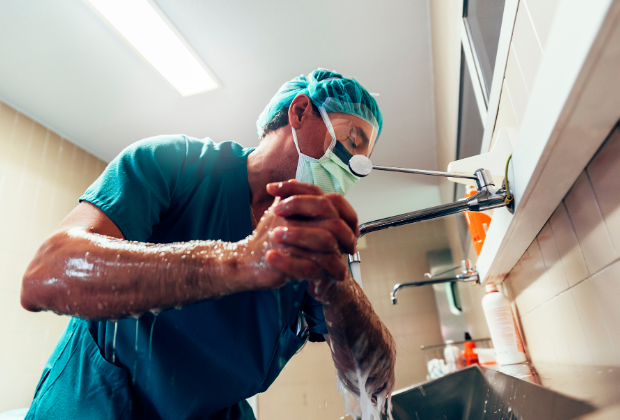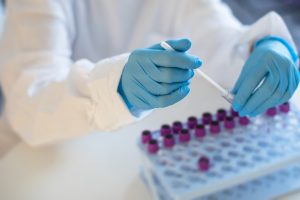South African television personality, Derek Watts, recently shared that he was suffering from sepsis and “would basically have to learn to walk again”. Sepsis, a life-threatening condition, happens when the body has an excessive immune response to an infection in the bloodstream. This overreaction can lead to organ damage. Sepsis must be diagnosed early and treated immediately to prevent septic shock. In 2017, around 48.9 million people were affected, and 11 million died from sepsis worldwide. The Conversation Africa’s Ina Skosana spoke to pathologists from the National Institute of Communicable Diseases about the illness and its impact.
What causes sepsis?
Bacterial, fungal and viral infections can lead to sepsis and septic shock. The condition can occur from infections acquired while an individual is hospitalised, however, it can also occur from infections acquired in the community.
There are common causes of sepsis. These include infections of the respiratory system (pneumonia for example), genitourinary system (such as urinary tract and or kidney infections), gastrointestinal infections, and in the healthcare setting, indwelling catheter sites. Infections of the central nervous system (meningitis) as well as skin and soft tissue (surgical site, wounds or burns) are also common causes of sepsis.
The most common infection in septic patients worldwide is pneumonia caused mainly by bacterial pathogens.
Who is at risk of sepsis?
Any patient with an infection can develop sepsis. But babies up to one month old and people older than 65 years have a higher risk of developing the condition.
The risk of sepsis is also high among people with weakened immune systems such as those with HIV or patients undergoing chemotherapy. Prolonged hospital stays or admission to an intensive care unit (ICU) can also increase the risk of sepsis.
Other risk factors include chronic diseases such as diabetes, kidney disease or chronic obstructive pulmonary disease, patients with medical devices inserted into the body and having history of prolonged use of antibiotics.
What are the symptoms of sepsis and septic shock?
Symptoms of sepsis are not specific. These may include one or more of these:
- Fever
- Tachycardia (elevated heart rate)
- Tachypnea (rapid breathing)
- Altered mental state (confusion)
- Lethargy especially in children
Septic shock is a progression of sepsis. It’s characterised by hypotension (low blood pressure), hypovolaemia (loss of bodily fluids such as water and blood) and organ dysfunction.
Patients typically present with extreme confusion or loss of consciousness.
How is sepsis and septic shock diagnosed?
There are various tests available to diagnose sepsis and septic shock. Sepsis and septic shock are clinical syndromes defined by a combination of signs, symptoms, laboratory and physiological abnormalities.
A variety of clinical variables and tools such as vital signs (heart rate, respiratory rate, temperature and blood pressure), laboratory blood tests (confirmation of infection) and clinical examinations have to be reviewed for sepsis screening.
Commonly, blood samples are taken to test for causative bacterial and fungal pathogens. Other laboratory tests can be performed to try find the source of the infection.
Imaging studies can be used to identify or detect the site of infection. Chest x-ray for example, is used to diagnose pneumonia. An ultrasound can show infections in the gallbladder and kidneys. Computerised tomography (CT) scans are used for infections in the liver, pancreas or abdomen. And magnetic resonance imaging (MRI) can detect soft tissue or bone infections.
How is sepsis managed?
Once diagnosed, sepsis needs early, thorough, aggressive and appropriate management to increase the likelihood of patient recovery. Patients with sepsis need close monitoring and treatment in a hospital ICU. This is because septic patients may need lifesaving measures to be stabilised.
Intravenous fluids should be started as soon as possible, preferably within the first three hours of sepsis being identified.
It is also recommended that patients are admitted to an ICU and that mechanical ventilation is used for respiratory support in patients with acute respiratory distress syndrome. The source of sepsis should also be controlled. This could take place by draining an abscess or changing of an intravenous line.
How is sepsis prevented?
To prevent sepsis, both the community and healthcare workers have a responsibility to ensure that infections don’t develop.
In the community, infections can be prevented by controlling chronic medical conditions. Vaccinations, for example, prevent between four and five million deaths annually by preventing infections or reducing their severity. Practising proper hand hygiene reduces the risk of diarrhoea by 40%. And safe water and sanitation reduces the global burden of disease by 10%.
In healthcare facilities prevention of the sepsis include practising appropriate infection prevention and control measures which can reduce infections by 50%. Recognising sepsis early and introducing antibiotics treatment early can reduce the likelihood of sepsis progressing to mortality. Anyone who has signs and symptoms of sepsis, even when the underlying infection is not apparent, should seek medical care immediately.
Sepsis is a major public health burden. Controlling it can create healthier societies.![]()
Caroline Maluleka, Senior Pathologist, National Institute for Communicable Diseases
This article is republished from The Conversation under a Creative Commons license. Read the original article.





